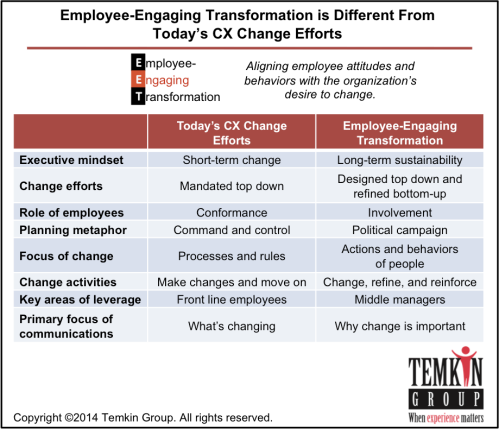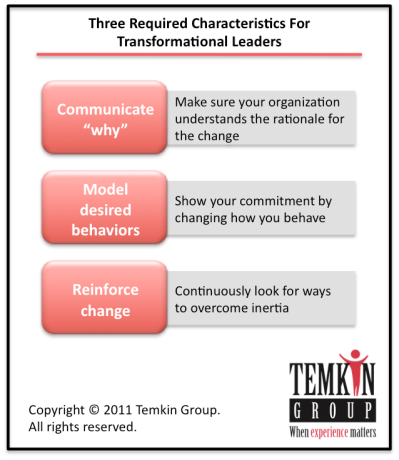What is Culture? How People Think, Believe, and Act
April 3, 2015 1 Comment
I often say that the customer experience your organization delivers is a reflection of your culture and operating processes. In other words, what customers experience outside is based on what’s going on inside. To consistently differentiate your customer experience, you need to transform your culture.
“Culture eats strategy for lunch”
– Peter Drucker
The reason that culture is so important is that it frames what people (employees) do when no one is looking. You have two choices for driving employee behaviors: 1) Prescribe all of their actions and put in place mechanisms to monitor and control them, or 2) Create a culture that encourages them to act consistently with your organization’s objectives. The first approach requires an ever-growing level of resources, and is very difficult to sustain.
Herb Kelleher, founder of Southwest Airlines, has said that:
“If you create an environment where the people truly participate, you don’t need control. They know what needs to be done and they do it. And the more that people will devote themselves to your cause on a voluntary basis, a willing basis, the fewer hierarchies and control mechanisms you need.”
Our research has shown that customer-centric organizations demonstrate four CX core competencies:
- Purposeful Leadership:Leaders operate with a clear, well-articulated set of values.
- Compelling Brand Values: Brand attributes drive decisions about the company treats customers.
- Employee Engagement: Employees are fully committed to the goals of the organization.
- Customer Connectedness: Customer feedback and insight is integrated throughout the organization.
To help companies drive culture change, which we believe is a campaign to engage all employees, we created a concept called Employee-Engaging Transformation. This approach requires a different view towards driving organizational change:
 What Exactly is Organizational Culture?
What Exactly is Organizational Culture?
All of our work in this area comes down to a key reality; culture is how employees think, believe, and act. So if you want to drive culture change, you need to deal with all three of those areas. Here’s how:
- Think: Employees need to be intellectually bought-in and understand why there needs to be a change.
- Believe: Employees need to see that leaders are truly committed to the change.
- Act. Employees need to adjust some of their behaviors to align with the change.
Companies often focus on the think level, hoping that a barrage of communications can drive culture change. Well it can’t. You need to develop plans that deal with all three levels: Think, Believe, and Act.
Leaders Can Make or Break Culture Change
Leaders play a critical role in driving cultural change. As you can see above, employees won’t “believe” in any change unless they see their leaders behaving differently. We’ve identified three characteristics of transformational leaders: communicating “why,” modeling the desired behaviors, and reinforcing change.
If leaders continue to operate in the same way, making the same decisions and trade-offs, then the organization will believe that nothing is changing — no matter how many emails the CEO sends, or compelling speeches she gives at town hall meetings.
The bottom line: Culture is a key ingredient to long-term CX success.

Great article Bruce! This excellent article can be summed up in the first sentence, which states that the customer experience your organization delivers is a reflection of your culture and operating processes. The creation of that culture starts with leadership defining and communicating their vision for the culture. From there people are trained and the culture is put into action. Done correctly, the result is a better place to work, more engaged employees and happier customers.